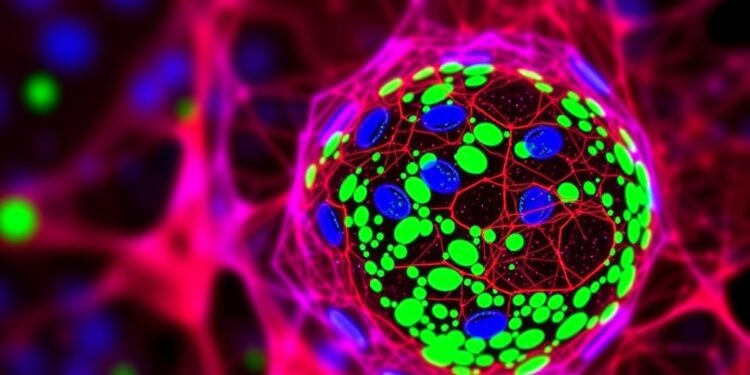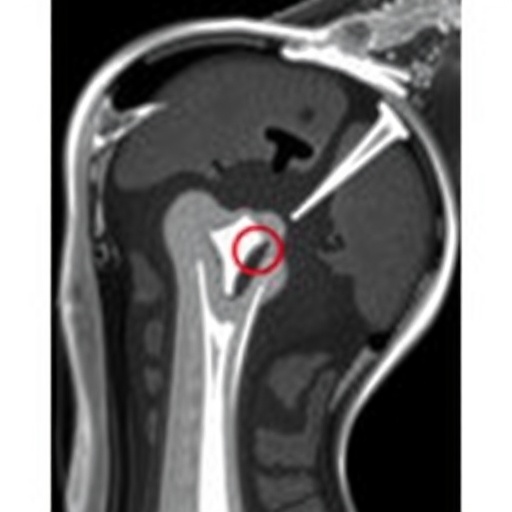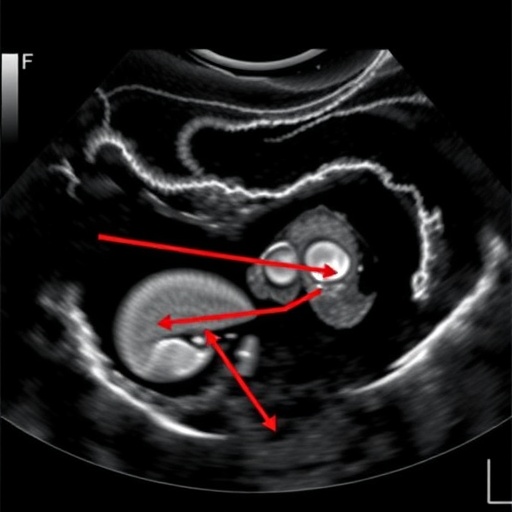
Breast cancer stands as one of the most pressing health crises affecting women today, claiming countless lives globally. In recent developments, researchers have turned their attention toward a novel protein known as Tumor necrosis factor α-induced protein 3-interacting protein 1, or TNIP1. This ubiquitin-binding protein has garnered interest due to its ubiquitous expression and potential roles in cellular processes. However, its precise function within breast cancer cells remains poorly understood, prompting a dedicated investigation into the molecular dynamics of TNIP1 as it relates to cell proliferation and apoptosis.
In the quest to understand the impact of TNIP1 on breast cancer, scientists employed several advanced methodologies. A key part of the research involved performing colony formation assays on widely studied breast cancer cell lines, including MCF-7 and T47D. By transfecting these cells with short hairpin RNAs targeting TNIP1 and cycling G1 (CCNG1), the researchers could assess how the downregulation of these proteins influenced cellular growth patterns. This experimental design offered a clear pathway to elucidate the importance of TNIP1 in cancer pathophysiology.
To gain further insights into the role of TNIP1, quantitative polymerase chain reaction (qPCR) assays were executed. These assays enabled the evaluation of messenger RNA (mRNA) levels of TNIP1, CCNG1, and cyclin D1 (CCND1). On analyzing the results, it became evident that the manipulation of TNIP1 levels directly correlated with changes in mRNA expression profiles of critical cell cycle regulators, including CCNG1 and CCND1. These findings set the stage for deeper investigations into the intricate web of signaling pathways influenced by TNIP1.
In addition to qPCR, the researchers utilized immunoprecipitation and immunoblotting techniques to assess protein expression levels. This helped to visualize the interactions between TNIP1 and other essential proteins like CCNG1 and CCND1, revealing a direct interaction between TNIP1 and CCNG1. The interaction provided a crucial piece of evidence; not only was TNIP1 affecting CCNG1 levels, it was also capable of influencing the stability of CCNG1 through the ubiquitination process. This finding sheds light on the complex regulatory mechanisms that govern cell cycle progression in breast cancer.
The immune response and cellular signaling pathways were also evaluated using a dual-luciferase reporter assay. This innovative approach allowed researchers to explore the molecular mechanisms by which TNIP1 mediates signal transduction pathways, including the notable NF-κB pathway. The activation of the NF-κB pathway was particularly significant, as this pathway is often associated with inflammatory responses and oncogenic transformation. The implications of TNIP1 activation of NF-κB in the context of breast cancer emphasize a potential mechanism by which tumors may escape apoptotic signals.
As the research advanced, the team observed that the knockdown of TNIP1 induced a marked growth arrest in breast cancer cells. This effect was mirrored by CCNG1 knockdown, indicating a shared pathway influenced by TNIP1 activity. Such findings imply that the presence of TNIP1 is not merely incidental but rather critical for maintaining the delicate equilibrium between cell proliferation and apoptosis within the tumor microenvironment. Consequently, the abrogation of TNIP1 expression could tip this balance, pushing cells toward growth arrest and increasing apoptotic rates.
Furthermore, the implications of this study extend beyond mere growth arrest. Researchers found that the knockdown of TNIP1 also activated apoptosis in MCF-7 and T47D cells through the dysregulation of the NF-κB pathway. This evoked a considerable interest among oncologists and researchers alike, as the activation of NF-κB has been frequently linked with tumor progression and resistance to chemotherapy. The dual action of TNIP1 in promoting proliferation while inhibiting apoptosis presents an intriguing target for therapeutic intervention.
In consolidating these results, the study proposes that TNIP1 serves as a critical marker in breast cancer biology. The discovery that TNIP1 not only regulates CCNG1 but also orchestrates a broader signaling landscape offers a multifaceted approach to understanding breast cancer treatment strategies. By unveiling the role of TNIP1, the findings suggest promising avenues for future research that may translate into therapeutic applications.
Moreover, these revelations about TNIP1 contribute to an ever-growing understanding of biomarkers in oncological research. The capability to manipulate TNIP1 levels may provide innovative strategies in personalized cancer therapy, opening doors to more nuanced treatment regimens that address individual molecular profiles in patients. The study positions TNIP1 as not just an academic curiosity but as a pivotal player in the clinical realm.
In conclusion, this research illuminates the critical role of TNIP1 in breast cancer cell dynamics, showcasing its potential as a therapeutic target. By understanding the underlying molecular mechanisms and pathways involved, researchers and healthcare providers stand on the brink of developing novel approaches to combat breast cancer. The complexity of TNIP1’s interaction with other cellular components underscores the intricate tapestry of molecular interactions that fuel tumor behavior and responses to treatment.
The implications of this research reach far beyond the laboratory, promising significant advancements in the way clinicians tackle breast cancer therapies. With TNIP1 being a potential target, the therapeutic landscape could evolve into one that is more tailored and effective in addressing the nuances of tumor biology. This exciting frontier beckons for further exploration, as researchers aim for breakthrough discoveries that could redefine breast cancer management and improve patient outcomes.
Emerging research like this exemplifies how science is continually redefining our understanding of cancer, leveraging molecular insights to develop smarter, more effective interventions that could save lives. The journey towards mastering breast cancer is slowly but surely unfolding, with TNIP1 playing a pivotal role in unlocking new possibilities in cancer care.
Subject of Research: TNIP1 and its role in breast cancer cell proliferation and apoptosis
Article Title: TNIP1 Knockdown Induces the Growth Arrest and Apoptosis of Breast Cancer Cells by Activating the NF-κB Pathway
News Publication Date: 25-Dec-2024
Web References: Oncology Advances
References: DOI
Image Credits: None
Keywords: Breast cancer, TNIP1, CCNG1, apoptosis, NF-κB pathway, cell proliferation, ubiquitination, oncogenesis, therapeutic targets
Tags: apoptosis mechanisms in breast cancerbreast cancer cell line studiesCCNG1 regulation in cancercell growth arrest in cancer researchcolony formation assays in cancer researcheffects of short hairpin RNA on cancer cellsmolecular dynamics of breast cancerNF-κB pathway activation in cancerqPCR assays in cancer studiesrole of TNIP1 in cell proliferationTNIP1 knockdown in breast cancerubiquitin-binding proteins in cancer biology





